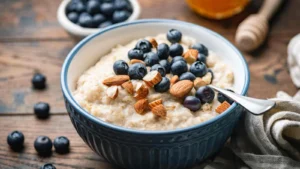Introduction
Walking is a low-impact, accessible form of exercise that can be easily incorporated into a daily routine. While it may not be as intense as other forms of exercise like running or weightlifting, walking can still be an effective way to shed pounds and improve your fitness level.
The Benefits of Walking for Weight Loss
Calorie Burning
Walking helps burn calories, which is essential for weight loss. The number of calories burned depends on the individual’s weight, walking speed, and duration. Generally, a person weighing 150 pounds can burn approximately 100 calories per mile.
Improved Cardiovascular Health
Walking is an excellent exercise for improving cardiovascular health. It strengthens the heart, reduces blood pressure, and improves circulation. A healthy cardiovascular system supports a more effective weight loss plan.
Increased Metabolism
Regular walking can increase metabolism, helping the body burn calories more efficiently. This boost in metabolism is crucial for long-term weight loss and maintenance.
Enhanced Mood and Reduced Stress
Walking promotes the release of endorphins, which can improve mood and reduce stress. Lower stress levels can help prevent emotional eating, a common obstacle in weight loss.

Adding Walking into a Holistic Approach to Weight Loss
Set Realistic Goals
To create a sustainable weight loss plan, start by setting realistic goals. Determine how much weight you want to lose and set a reasonable time frame. Remember that losing 1-2 pounds per week is a healthy and achievable rate.
Create a Walking Routine
Establish a walking routine that fits your schedule and preferences. Aim for at least 150 minutes of moderate-intensity walking per week, or 30 minutes per day, five days a week. You can break this down into smaller sessions if needed.
Monitor Your Progress
Track your walking sessions, distance, and time to monitor your progress. Use a pedometer, smartphone app, or fitness tracker to help you stay motivated and accountable. The options, nowadays, are countless!
Combine Walking with a Balanced Diet
A well-rounded weight loss plan should include a balanced diet. Concentrate on eating unprocessed, nutrient-rich foods like fruits, vegetables, lean protein sources, and whole grains. Make processed foods, added sugars & unhealthy fats, a bad friend of yours.
Add Strength Training
Blend strength training exercises into your routine to build muscle and boost your metabolism. Aim for two to three sessions per week, targeting all major muscle groups.
Get Support
Having a support system is essential for a successful weight loss journey. Share your goals with friends or family members, join a walking group, or be a part of the Thera Wellness community and connect with others who share the same goals as you.

Tips for Maximizing Weight Loss Through Walking
Increase Intensity
To burn more calories and improve cardiovascular fitness, gradually increase the intensity of your walks. Incorporate hills or stairs, or try interval training by alternating between fast and slow-paced walking.
Walk in Different Environments
Vary your walking routes to keep your routine interesting and challenging. Walk in parks, on trails, or explore new neighborhoods to stay motivated.
Use Proper Form
Maintain proper walking form to maximize benefits and prevent injury. Keep your head up, engage your core, and swing your arms naturally.
Wear Appropriate Footwear
Invest in comfortable, supportive walking shoes to prevent discomfort and injury. Replace shoes every 300-500 miles or when they show signs of wear.
Conclusion
Walking is an effective, low-impact exercise that can contribute to weight loss when combined with a balanced diet and a holistic approach to weight loss. The THERA WELLNESS™ weight loss plan focuses on addressing stubborn and difficult-to-eliminate regions, such as the midsection, hips, thighs, and arms. Experience a potential weight loss of up to 4 lbs per week, specifically targeting ‘rainy day’ fat reserves rather than essential structural fat.
By setting realistic goals, creating a walking routine, and incorporating additional healthy habits, you can successfully achieve your weight loss objectives.




